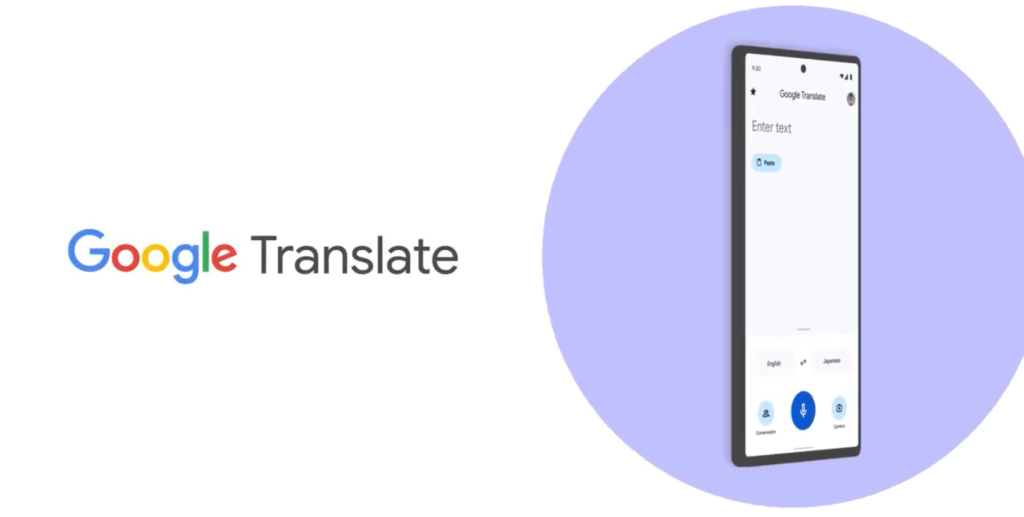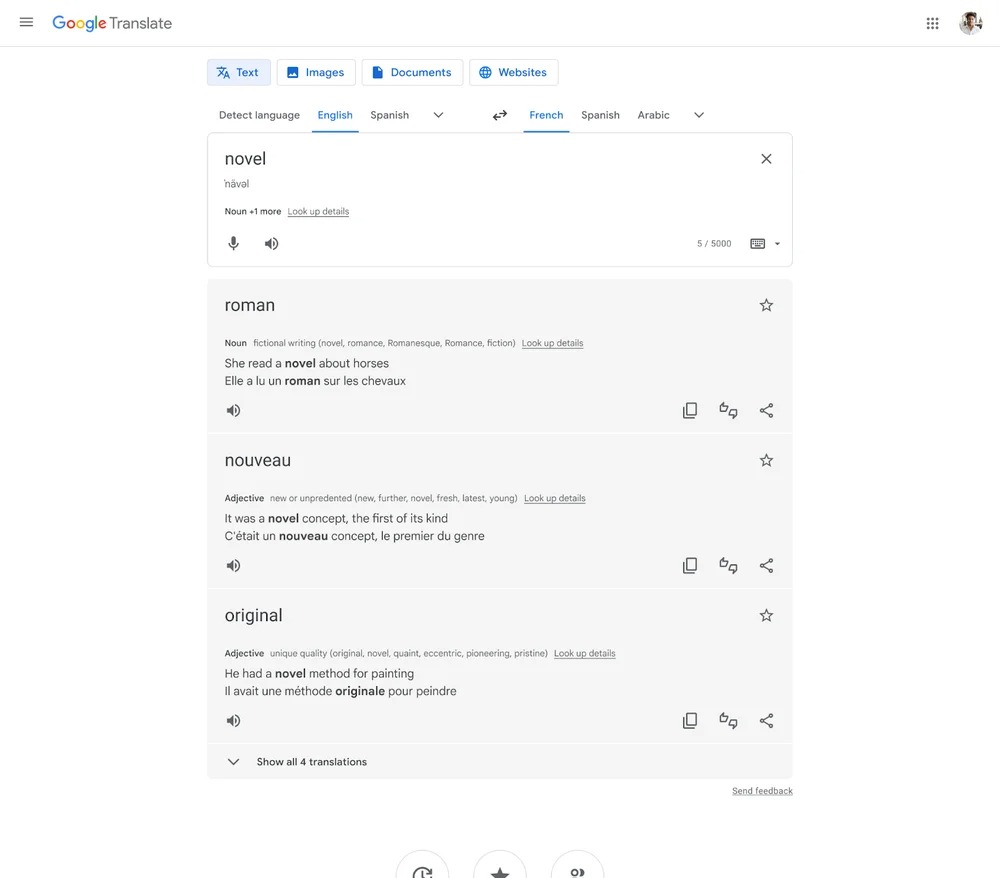

Google has improved its Google Translate service by incorporating new features, enhanced context-based translation options, and a revamped design.
This is to provide a better experience for its 1 billion users. In the previous year, 24 new languages were added to the platform, including Assamese, Bhojpuri, Konkani, and Sanskrit.
Contextual translation options
Google Translate has been updated to provide more contextual translation options with examples in the target language. This will ensure that you have the necessary context to accurately translate words, phrases, idioms, or expressions, depending on your purpose, in languages such as English, French, German, Japanese, and Spanish, which will be rolled out in the coming weeks.


Fresh look, new languages and new gestures
Recently, the Google Translate app on Android received a new design, and in the near future, a similar design will be brought to the iOS version. The redesigned app features a larger typing area and more convenient ways to initiate a translation, such as through conversation, voice input, or using the Lens camera.
New gestures: Google Translate has added new gestures to make the app more user-friendly, such as the ability to select a language with fewer taps, and holding the language button to quickly access recently used languages with a swipe.
More readable fonts: The text area on the home screen can now be swiped down to view recent translations. Translation results are now more readable, with a dynamic font that adjusts as text is entered, and additional translations and dictionary definitions (when available) to help explore different meanings.
More languages: 33 additional languages are now also available for offline use, including Basque, Corsican, Hawaiian, Hmong, Kurdish, Latin, Luxembourgish, Sundanese, Yiddish, and Zulu, among others.
Image translation expands
Google Translate has traditionally been used for text translation, but with advancements in AI, it’s now possible to translate images with Lens, using the camera on your device. The advanced machine learning technology has also enabled the integration of translated text into complex images, making it look and feel more natural (available on Android phones with 6GB+ RAM or more).
Availability
Google Translates above-mentioned features will be rolled out in the coming weeks. Google also mentioned that in the near future, the app will expand web image translation to provide more options for translating image-based content, regardless of how it’s searched.
Speaking on the announcement, Xinxing Gu, Product Manager, Google Translate, said,
AI has helped power some of our biggest advancements in translation in the years since we’ve launched Google Translate. Today, we’re launching even more AI-powered features to provide helpful and contextual awareness when using Translate on mobile and the web.
This year, we’ll be continuing to experiment with AI-led experiences in Translate to give you faster, more accurate and dynamic translations in the app, and around the world.

